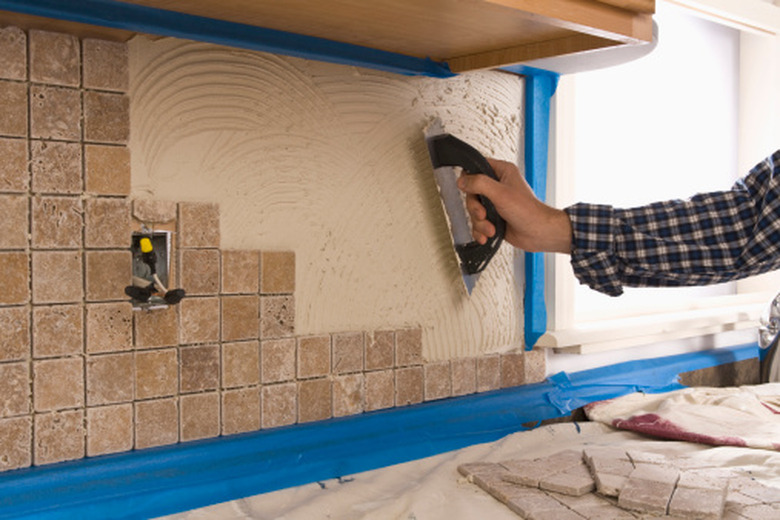Can You Use Joint Compound On Painted Walls?
Joint compound is an inexpensive plaster product used not only to hang drywall but also to texture walls. The plaster may be used over painted walls, but a small amount of prepping is needed to ensure the plaster adheres to the wall. Once dry, the joint compound can be painted with latex paint and glazed for additional dimension. Before texturing your walls, ensure this is the look you want. Removing joint compound texture is very difficult.
Cleaning Walls
Cleaning Walls
Ensure the walls are clean and dirt free before applying joint compound. Older homes may have a film on walls due to average wear and tear. Wipe down walls with a damp sponge, and use a broom to remove any cobwebs in corners of the room. Remove any accumulated dust along baseboards and crown molding.
Sanding
Sanding
Lightly sand the walls to create a surface the plaster can grip to, which is especially critical if the current paint on the walls has a glossy sheen. Sand the walls with a sanding pole and attached medium-grit sandpaper. Wear protective eye wear and a dust mask during the sanding process. After sanding, wipe the walls down with a sponge to remove all dust.
Texturing
Texturing
Roll or trowel on the joint compound. You'll want to use a small roller as a large paint roller will be heavy with plaster attached. When using a trowel, swipe on plaster onto the trowel, and hold the trowel's edge to the wall. Create a texture by wiping on the plaster to the wall. Each person's texture is different. Still, your texture should look the same on the entire wall. You do not need to cover the entire painted wall, only about 85 percent of the wall needs to be covered. When painted and glazed, the untextured areas will simply look as though they are the "low" portion of texture.
Plaster Tips
Plaster Tips
The plaster should be wet and not have any hard clumps in the mixture. If you feel the plaster is difficult to apply, add a small amount of distilled water and combine with plaster. Use a hand drill with a plaster mixer attached, commonly referred to as a squirrel mixer. Use lightweight joint compound instead of regular joint compound; the lightweight version does not crack as readily when drying.
References
- "Faux Finish Secrets From Brian Santos the Wall Wizard"; Brian Santos; 2006
- "Professional Faux Finishes Made Easy"; Patricky Daly; 2006
